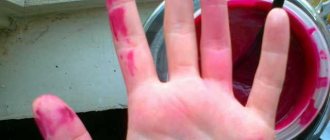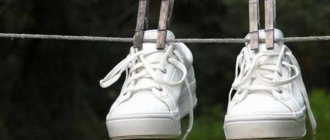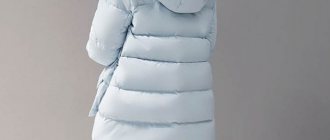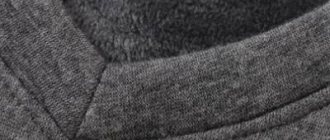How to clean different types of leather?
Natural
The following recipes may be useful to you:
- Lemon juice is good for cleaning dirt from natural leather. You need to moisten a cotton pad with it and wipe the stain. With the help of lemon juice, your leather product will become not only clean, but also shiny.
- Sometimes a simple soap solution with ammonia can do the job. It is necessary to add one tablespoon of ammonia to soap and water, wet a sponge or cloth with this solution and wipe the contaminated area, after which the product should dry. To add shine, you can apply a small amount of Vaseline to the skin.
- If the contamination is large and deep, then it will not be possible to remove it with soap. A good way is alcohol or gasoline (purified). You need to moisten a cotton pad in one or another product and wipe the stain with it.
- In addition to lemon, an orange, or rather its peel, can also come to the rescue. It is simply rubbed onto the contaminated area until the stain completely disappears. This method is also good because orange peel removes unpleasant odors from leather fabric. This will be useful if cleaning was previously carried out using gasoline. The crust method is not suitable for white products.
- For light shades, cleansing with milk will be important. You need to moisten a sponge in it and wipe the item, then let it dry.
- You can also get rid of dirt on your skin using chicken protein. It is whipped until foamy, then applied to the contaminated area, and then washed off. When the item dries, not a trace will remain of the stain.
- To remove dirt and dust from a leather item that has not been worn for a long time and has become dry, you need to lubricate it with glycerin. After treatment, it will become soft, shiny and clean.
Artificial
Caring for leatherette has its own nuances. But you can still clean stains from leather pants, a casing or a raincoat at home, without resorting to dry cleaning.
If it is undesirable to wash a genuine leather item in a machine, then leatherette can. But before you put the dress in the washing machine, just in case, you need to look at the label, which contains information about whether this item can be washed. If not, you need to find another way to remove the stain. If washing is possible, the main thing is to remember that the washed item should never be wrung out, otherwise there is a risk of ruining the item irrevocably.
- A small stain can be removed, as in the case of natural leather, with a soap solution. You just need to wash your pants or skirt with it, inside and out. Aggressive substances are excluded, so turpentine or gasoline cannot be used.
- The next method will appeal to coffee lovers. It is necessary to apply coffee grounds to the stain. To do this, freshly ground coffee is diluted in water, mixed until a homogeneous mass is formed, then this mixture is applied to the stain, and using a sponge, the product is gently wiped inside or outside (depending on how deep the stain is). After the procedure, the remaining grounds are removed using a dry cloth (preferably flannel).
- To clean clothes from dirt, you can purchase a special powder or spray, which is sold in stores; it can also clean eco-leather.
How to soften your skin
Hardening of leather items after washing is common. To make them soft at home, you can sometimes use popular methods:
- Leather shoes or belts are lubricated with cooled rendered goose fat. Excess is carefully removed with a paper towel.
- A softening hand cream will help quickly restore the elasticity of your gloves. This product is easy to use. It is enough to put gloves on your hands, pick up a little cream and spread it over the entire leather surface with light massaging movements.
- A homemade ointment can make leather items softer. To make it, beeswax is brought to a liquid state using a water bath. Add turpentine and castor oil to it in equal volumetric proportions. The treatment is carried out with a cooled composition. After drying, it will additionally provide protection from moisture.
Household skin products
Leather items will look luxurious for a long time if they are regularly cared for using available household products:
- Ammonia
Combine liquid soap, warm water and ammonia in equal proportions. A soft cloth is moistened in the solution and the contaminated areas are wiped.
You can replace soap with baking soda. To do this, pour warm water - 500 ml - into an enamel bowl. Dissolve soda in it - 3 tsp. and add ammonia - 1 tbsp. l.
Ammonia for leather products
- Petrolatum
If you want to restore the shine to things made from rough leather, it is recommended to rub them with Vaseline before drying. Then the surfaces are polished to a shine with a clean rag. After this procedure, not only softness will be provided, but also protection from getting wet in inclement weather.
- Alcohol with lemon juice and glycerin
Often, greasy areas form near pockets, on collars or cuffs. To deal with them, you don't need to wash the entire thing. First, wipe problem areas with ethyl alcohol and then with fresh lemon juice. Allow to dry and treat with glycerin.
- Egg white
Well-beaten egg white refreshes leather surfaces well and gives them an impressive shine. Take a soft textile flap and rub the foam. After finishing processing, rub with flannel until shiny.
- Onion
The onion is a good way to refresh skin that has lost its decorative effect. It is cut and contaminated. The product should then be well ventilated.
Leather care products
In order not to deform the leather item, it is advisable to use professional care products. Their range is extensive, so it is possible to choose an option suitable for solving a specific problem.
When used correctly, it is possible not only to remove dirt from leather products and modern durable leatherette, but also to restore the damaged structure, restore shine and elasticity, disinfect, make them more durable and waterproof.
ARTICLE FOR YOU
How to properly wash acrylic items
Leather care products
The following varieties are used:
- water-repellent sprays that provide additional impregnation to protect against snow and rain;
- a special sponge soaked in softening and cleansing compounds;
- wax that eliminates creases, cracks, and abrasions;
- liquid skin that eliminates scratches and masks areas that have lost color;
- foam that removes dirt and restores shine.
When using, follow the instructions.
Drying
After washing, leather items must be dried, avoiding creases and loss of elasticity. There are several rules to follow when carrying out this procedure:
- Special lasts made of plastic or wood are inserted into shoes. You can put crumpled paper inside.
- The belt, backpack or bag should be hung in a ventilated area.
- Pants, skirt, jacket are turned inside out. A terry towel is spread on a horizontal plane. Lay the product, carefully straightening all the folds. You can place them on a hanger, making sure that creases do not form.
- After removing excess moisture, the gloves are straightened and pulled onto the uniform. You can buy a special plastic dummy hand or make one yourself from wire. Leather items should be dried away from heaters and radiators, providing protection from direct rays of the sun.
Drying leather goods
Washing machine: pros and cons
It is best not to wash leather and leatherette items at all. These materials do not like excess moisture and with frequent washing can crack, stretch and fade. If you decide to wash your clothes, it is better to do it by hand.
Various clothes are made from leather of different textures and densities. For example, a leather raincoat or jacket is usually made of thick leather and is designed to be worn in the rain or even snow. It is better to dry clean them if possible. But leather pants or a skirt have a softer texture and thinner leather. They can be washed if specified on the label.
If there are icons on the product that allow you to wash the item in a machine, then it is better to do so. To do this, you should choose a temperature of no more than 35 degrees. At higher rates, the products will definitely become deformed and lose their appearance. The spin should also be turned off completely or the regulator should be set to the minimum number of revolutions (300-400). Washing gels are less likely to leave streaks. The machine drying mode must be turned off. Heating will cause cracks and abrasions.
This recommendation also applies to leather shoes. It is not recommended to wash it. In addition to capricious leather or fragile leatherette, your favorite shoes may contain fittings and adhesives that are easily deformed by water and even more so when scrolled in a drum. The same applies to headwear - caps with thick visors, berets and hats.
Using a washing machine
Before you decide to take such a step, keep in mind that approximately 95% of leatherette items cannot be automatically washed at home. If the item is dear to you, contact the professionals.
Have you decided to take desperate measures? Then cut off or sew up all appliqués and decorative elements with sharp edges, as well as those that could theoretically harm the product. Then soak the item in a bathtub filled with warm water for 10 minutes. Only then turn on the automatic machine.
Important! Be careful when setting the mode. Only those designed for delicate fabrics are suitable. It is better to disable the spin function completely.
General cleaning recommendations
- Carefully study the label of the item of clothing. The manufacturer indicates on them whether the item can be ironed, steamed and washed.
- Before using the cleaning product, be sure to test on an inconspicuous area.
- It is also necessary to check the reaction of the material to ordinary water.
- Even if the label says the jacket or pants can be washed, don't wash it too often. Rely more on cleaning. Don’t forget to treat things with protective agents and carefully consider care issues.
- Never dry your wardrobe items on a radiator or with a hairdryer.
- Do not wash leatherette outfits with other items.
Traditional method - manually
If the trousers are made of fabric that is not recommended for machine washing, we will wash them by hand. This, of course, is more troublesome, but if you follow all the rules, the result will be excellent:
- There is no need to use too hot water; its temperature should not be below 30°C and not exceed 35°C.
- In washing, liquid detergents are used, which in their composition are suitable for certain types of fabric, or a soap solution.
- When washing and rinsing, spinning is contraindicated.
- Dry flat on a hanger.
- Prepare your items for washing - empty your pockets, remove the belt, make sure the hooks, zippers, and buttons are intact.
- Pants should be washed buttoned and turned inside out.
- Be sure to soak them.
- It is better to wash them in the bathroom, since here they can be laid out as evenly as possible.
- Use liquid detergents according to the fabrics. You can resort to a solution with added soap.
- If you only have washing powder and you need to wash, thoroughly dissolve it in water so that after drying, streaks do not appear.
- For extremely dirty areas, stain removers are recommended.
The washing process itself is simple and short:
- The trousers are laid out at the bottom of the bath, water is added, evenly covering the item.
- The selected detergent is applied to the brush and carefully distributed over the entire surface of the product.
- If necessary, repeat the wash by changing the water.
- You need to rinse your trousers carefully and more than once, until they are clean.
- Do not change the water temperature.
- It is strictly forbidden to twist or squeeze the product.
- To properly dry your trousers, you need to straighten them out, fold them along the arrows and hang them by the bottom of the legs on a trouser hanger.
- First, they are left in the bathroom to allow the water to drain.
- Then hang it in an open place, while avoiding direct sunlight on the washed item. In fact, almost all fabrics deteriorate to a greater or lesser extent in the sun.
Instructions
There are three methods for cleaning leatherette items. It can be hand and machine washable. For delicate items, dry clean only. Some durable materials can be treated with chemicals when dry cleaning. Traditional methods can also be used.
Manual processing of artificial leather
With this method, you must follow the instructions:
Take a large basin and pour warm water into it. Its temperature should be a maximum of 30C.- Pour 50 ml of liquid soap into a basin.
It is recommended to use a glycerin-based product. You can also use dishwashing detergent. Only liquid and non-aggressive products should be used. - Add a large spoonful of vinegar to the basin to make the eco-leather soft and more effectively remove stains from its surface.
- Wipe the product thoroughly with a soft sponge. Do not wrinkle leatherette.
- Drain the water. Pour water into the basin at the same temperature as during the washing process. Rinse the product in it. You need to do this 2-3 times, changing the water each time.
- After washing, do not wring out eco-leather. This causes it to become deformed and stretched. After rinsing, hang it on a hanger to allow the water to drain.
Proper washing
- An item made of linen or cotton fabric should be moistened, soaped with laundry soap and left in warm water for an hour.
- Woolen items should be soaked in cold water, adding a few drops of ammonia.
- The jeans are left in a bowl of soapy water for two hours.
If wool trousers have heavy dirt or greasy stains, then before wet cleaning you should treat them with a sponge with a small amount of hydrogen peroxide or 9% vinegar.
To wash woolen clothes in a machine, proceed as follows:
- Pre-soak the pants in soapy water for 10 minutes.
- We load it into the washing machine along with other woolen items.
- Add liquid detergent for washing wool items.
- Select the washing mode: “Wool”, “Delicate”, “Silk” or “Hand”.
- The water temperature should be 30–35 degrees, and the spin should not exceed 300 revolutions.
Corduroy
Items made from corduroy should be washed by hand using liquid laundry detergent.
If your corduroy pants are just dusty, just clean them:
- Lay out the product on a horizontal surface.
- Wipe the fabric with a sponge soaked in soapy water. Don't get it too wet.
- When one side is processed, turn it over to the other side.
- We wash the sponge in clean water and repeat the procedure, removing the remaining soap solution.
How to remove stains?
To remove various types of stains, you can use a mixture of liquid soap and glycerin :
Take two large spoons of liquid soap and pour into a small container.- Add one large spoon of glycerin. Stir the mixture.
- Apply it to the contaminated area of leatherette. Leave for 10 minutes.
- Use a foam sponge to gently rub the stained area on the clothing.
- Wipe off any remaining mixture with a damp cloth.
- Wipe the treated area of the product with a dry cloth.
The Fill Inn cleaner must be used according to the following scheme:
- shake the bottle with the product;
- spray it evenly over the dirt;
- rub the cleaner with a sponge;
- wait 2 minutes.
After treatment, it is necessary to remove the product from the leatherette product with a dry, clean cloth.
How to remove stains from trousers when washing
For each type of fabric and stain, there are different methods that will allow you to properly treat the material and remove the stain.
From wool
It is very difficult to remove dirt from wool fabric, as the material is capricious. Therefore, cleaning your pants should be gentle.
- Remove dirt from the edges of the stain, moving towards the middle to prevent the stain from getting larger.
- Before using any product, do a test. Apply a small amount of solution to the back or inside seam. This way you can test the effect of the stain remover on the fabric.
- Stains left by grease are removed with tooth powder or potato starch
. And white fabric is treated with hydrogen peroxide. Apply the product, allow it to sit, and rinse under running water. The procedure can be repeated if necessary. - Chocolate stains can be easily removed by washing your trousers in a salt solution.
- Oil paint stains are wiped off with gasoline. Moisten a cotton pad and place it on the contaminated area. The paint will soften and come off easily.
- It is advisable to wash off blood drops immediately. Use only cool water. You can rub the blood with laundry soap. Let it soak in and then wash thoroughly. And rinse well.
From corduroy
- First turn the item inside out.
- Greasey stains are removed using dishwashing liquid.
- Use a soft brush or sponge. Apply the product evenly to the stain. Scrub with gentle movements.
- Then wash the pants in soapy warm water.
- When squeezing, do not twist the fabric.
From linen fabric
Linen material is durable and easily accepts many stain removers.
- The greasy stain is sprinkled with dry talc or chalk powder. Allow time to sit for the fat to be absorbed.
- Sweat will be removed with a solution of salt and ammonia (one spoon per glass of water). Moisten the stain with the mixture, wait a little and rinse thoroughly.
- When heated, traces of blood are fixed on the fabric, so wash only in cold water and laundry soap.
From the skin
Leather trousers require special care. If possible, it is better to take them to the dry cleaner. However, you can try to cope on your own.
- Many stains can be removed with ordinary soapy water. Just wipe the stained areas with it. Then rinse off the soap thoroughly so it doesn't leave a residue.
- Oily drops are washed off with glycerin soap.
- Paint stains can be cleaned with solvent.
- Wipe off any unpleasant stains with a cloth soaked in edible vinegar.
- Lemon juice
will help you restore the shine of your leather surface . Another way: simply rub with a citrus slice.
How to remove concealer stains
Schoolchildren and office workers use corrector, a drop of which can ruin the appearance of their trousers. Let’s immediately give a positive answer to the question of whether such a stain can be removed at home. It is quite problematic to wipe off the putty, but it is possible.
- Do not rub the stain on your trousers under any circumstances, as this will stain a large surface area of the material.
- If the stain is left by a water-based corrector, the stain can simply be washed off. Soak your pants in cold water and add soap. Then wash: in a machine or by hand, depending on the type of fabric.
- Got an alcohol-based touch? Take cologne or vodka. Soak a cotton swab with the product. Apply to stain, rub gently, then rinse.
Natural "helpers"
Of course, quickly washing an item in a washing machine is the easiest way. But if there are only small stains on the skirt, dry processing can also be done. Available means are suitable for this: ammonia and ethyl alcohol, soap, glycerin, lemon and vinegar.
Ammonia
Using an aqueous solution of ammonium hydroxide, you can remove dirt from leather products. Ammonia does not have a negative effect on the material and does not change its structure or color.
It is necessary to moisten a cotton swab in the liquid and treat the contaminated areas on the clothing. Remove stains from the edges to the center.
Soap solution
A solution of laundry or baby soap is a very effective remedy against any contamination. If there are small fresh stains on your leather skirt, you can simply hand wash the product in this solution.
Depending on the type of stain, you need to mix different products in combination with soap, then the result will be noticeable immediately:
- Grease stain. Mix grated laundry soap, ammonia and turpentine in a ratio of 1:1:2. Apply to the contaminated area, wait 7 minutes and rinse the product.
- Ice cream stains. It is necessary to hand wash the leather skirt in a solution of soap and ammonia (ratio 1:1).
- Dried wine stain. This type of contamination can be easily removed from the skin using a solution of 10% ammonia, soap and turpentine (proportions 1:10:2).
- Berries. First, you need to treat the stain with ammonia, and then wash the product in a soapy solution.
Ethyl alcohol, glycerin and lemon
This dry processing method helps get rid of greasy leather skirts and scuffs.
First of all, it is necessary to treat problem areas with a cotton pad soaked in ethyl alcohol. Afterwards, wipe the surface with lemon juice or lemon slices. As soon as the skin is dry, the skirt should be lubricated with a thin layer of glycerin.
Table vinegar will help remove salt stains and stains that remain after washing. Soak a cotton pad in a 9% vinegar solution and apply to the pockets and stitch lines.
Tools Overview
Proven methods for removing stains from leather pants:
- Use a brush to distribute the foam from the laundry soap over the surface of the product. Then rinse and leave to dry naturally.
- Vinegar will help remove stains in the form of stubborn dirt and blood. It needs to be diluted half and half with water. Apply the solution to the stain. After a couple of minutes, remove any remaining liquid with a damp cloth or sponge.
- A similar action can be carried out using lemon juice, alcohol, gasoline. The liquids are applied to a cotton pad and then removed with a cloth.
- White clothes are cleaned with a mixture of protein and milk in equal proportions.
- In order not to wash your pants, you can try to clean them of dirt using chemical liquids - Kozhanka, Beaute Cuir, Unikum. Products are used to treat contaminated areas.
- You can wash leather leggings using products that are gentle. They are sold in household chemical stores under different names.
Knowledge about the type of leather and its additional ingredients – polyester – helps prevent clothing from being damaged. Based on the characteristics, a detergent is selected.
How to wash leather clothes
When you decide to wash your leather leggings, you should first study the label. The manufacturer always indicates how to care for the material. The tag must contain the following information:
- machine or manual care;
- type of detergent;
- spin permissibility;
- temperature regime;
- preferred type of drying.
If you follow these recommendations, removing stains will not harm your clothes in any way.
When the label is lost, you will have to act at your own peril and risk. You can wash leather pants in the following ways:
- in dry cleaning;
- in the washing machine;
- manually;
- partially (wash only dirt).
It is better not to wash leather wardrobe items unless necessary. To simply refresh this delicate material, just wipe the product with a soft sponge and clean water. They first try to clean off the dirt manually. Removing one stain will damage your leather less than washing your pants completely.
Tips for washing certain leatherette items
Jacket
Small dirt can be removed with baking soda and a brush. Pour the powder onto the stain and rub lightly. Blow it out and look at the result. Repeat the procedure if necessary.
Second way:
- degrease the problem area with ethyl alcohol;
- brush it with lemon juice;
- let dry;
- lubricate with glycerin.
The third option is suitable for light-colored jackets. The stain is removed from them using milk or lemon juice. There is no need to wash them off.
Bag
It is not recommended to wash the accessory. Regularly wipe it with a rag and a brush soaked in glycerin, treat it with water-repellent compounds, then it will last longer.
If the stain is very noticeable, prepare a homemade cleaner. Ingredients: water and 3% vinegar essence. The components are taken in equal proportions. The product is applied pointwise, directly to problem areas.
Instead of vinegar, wool detergent and dish detergent are sometimes used. These options have a significant drawback: they need to be washed off. This is done like this:
- take undyed rags from natural fabrics and moisten them in soft water;
- wipe the surface of the bag with a wrung out and damp cloth;
- a specialized brush sets the direction of the pile (if the material is fleecy);
- then the accessory is dried at room temperature away from batteries, electrical heat sources and sunlight.
Do you want to prolong the “youth” of your accessory? Once you have dealt with the stain, wipe the outside of the bag with a silicone-impregnated sponge. This should be done only after complete drying.
Skirt
The process of automatically washing a leatherette skirt is no different from the method described above. Maximum permissible water temperature: 30 degrees. Optimal mode: delicate or manual. Instead of powder, it is better to use baby shampoo or liquid soap.
The outfit is dried at room temperature in a vertical position. If you are afraid of smudges, cover the top of the skirt with a clean towel.
Trousers
Algorithm of actions:
- to prepare the solution, mix alcohol and soft water in equal proportions;
- apply the product to a soft cloth, wipe the trousers (move your hand smoothly, do not press or shuffle);
- at the end of the procedure, wipe the treated area with a dry cloth;
- hang your pants on hangers in a heated room where there are no drafts.
If the product label indicates that it is machine washable, please note the following:
- Only modes for delicate fabrics are suitable;
- you need to give up spinning;
- You should take out the item immediately after finishing washing, otherwise it will become very wrinkled;
- Do not use bleaches.
We recommend purchasing specialized products designed for leatherette items.
Proper drying
It is not enough to wash pants made of delicate material properly. Drying must also follow the rules so that the item does not shrink, stretch out or change color.
Doesn't matter if washed by hand or in a washing machine
Dry leather items like this:
- in a dry, warm room;
- on a flat horizontal surface;
- all creases and folds on the product are straightened out so that they do not remain after drying;
- To ensure even drying, the item of clothing is placed between dry towels. This is necessary so that the moisture is absorbed faster and the item does not stretch.
You can dry clothes on hangers, but only after the towels have absorbed most of the water. Otherwise, under its weight, the product will be deformed and stretched.
- Do not dry your pants on or near a radiator, as this will lead to overdrying and deformation.
- Direct sunlight should be avoided to prevent fading of individual areas.
- If necessary, iron the clothes after drying. This should be done from the wrong side, through a layer of clean cotton fabric.
Washing pants and other leather clothing is easy. The main thing is to study the label and follow all the rules. Products made from delicate materials require mild cleaning agents, gentle washing and gentle drying. Washing for such wardrobe items is a rare event; it is arranged only in case of heavy soiling. For everyday care, simply wipe the product with a soft sponge moistened with clean water. With this care, the clothes will retain their original appearance for a long time.
How to machine wash a leather skirt
Machine washing for leather goods is not the best option, but if there are icons on the clothing label that allow this method, then you can wash it in an automatic machine. The main thing is to follow a number of simple rules and recommendations. How to wash a skirt made of faux leather (leatherette):
- The water temperature when washing should not exceed 30-40°C. Water with higher temperatures can damage the skin; the skirt can either stretch or shrink in size.
- The washing mode should be selected Delicate, and some modern washing machines have a Leather function.
- Spinning and drying must be turned off before starting the machine.
- The number of revolutions should be minimal - 300-400.
Products made from genuine leather must be washed in the same way as items made from leatherette.
You can dry a leather skirt on a hanger or simply lay it out on a horizontal surface.
Note! Leather products should be dried away from heating devices and direct sunlight.
Machine washable
You can wash your jeans either by hand or using a washing machine. Your choice should be based on such important points as color, model, presence of decorative components, decorations, seams. It is not recommended to machine wash jeans that have a large number of decorations, as this increases the risk of damage to expensive equipment.
Items made from denim should be washed separately from other items.
to avoid staining. You can also test the quality of your product by moistening a regular cotton pad with water and running it over the product. High-quality denim will not leave traces of dye on the cotton pad.
Preparation
Preparing jeans for washing is as follows:
- Study the information on the jeans label, namely: the water temperature at which it is recommended to wash them, spin and drying parameters.
- Before washing, inspect all surfaces of the product for stains. If there are any, treat them with undiluted cleaning agent, strictly following the instructions for use, leave them aside for a while, usually 5-10 minutes, then put them in the washing machine and select a mode that matches the washing parameters of your product. Use laundry soap if the dirt is very strong.
- Turn your jeans inside out to help protect the fabric, seams and fittings from damage and minor scratches.
Mode and temperature
As stated earlier, it is very important to read the information on your product label. To ensure that your jeans look the same even after several years as they did after purchase, always set the temperature and washing mode correctly.
New generation machines have a “Jeans” mode, the choice of which will provide you with automatic water temperature settings suitable for your product. If your washing machine does not have such a function, choose a delicate washing mode, it will preserve the original appearance of your product
, and the low water temperature will preserve color and shape.
If the contamination is minimal, or for some reason you have limited washing time, choose the fast washing mode (usually it is thirty minutes).
Detergents
For washing, choose mainly environmentally friendly products
, which have gentle properties, as well as fabric softener to make the texture of the fabric softer.
Be careful when choosing a detergent, no matter whether it is powder or liquid detergent; in both cases, they should not contain enzymes, phosphates, or chlorine, since these substances destroy the fabric. It is also not recommended to use bleaching agents, as they can locally spoil not only the color, but also the fittings of your product
A special detergent for washing denim products will protect your jeans from discoloration and also make the fabric soft.
When purchasing a product, be guided by your sense of smell and preferences.
. After opening the product, evaluate the smell and color of the liquid. Be smarter. The more active the smell and brighter the color of the product, the more the manufacturer adds unnecessary flavors and dyes to the composition.
Basic recommendations
Consider the washing recommendations:
- Be sure to check the contents of the pockets before washing, they should be empty. Small objects and debris can cause damage to your washing machine.
- If possible, remove all decorative elements, if any, during washing.
- Treat leather inserts with glycerin to prevent rubbing and scratches.
- To maintain the shape of your jeans during washing, fasten zippers, buttons and press studs. This will also prevent your product from having holes in the surface of the fabric.
Preparing for washing
- It is better to select a washing method based on information from the label; if washing in a machine is prohibited, you can try to clean the item manually;
- ordinary washing powder and bleach are prohibited - such products are dangerous for leather goods;
- Do not wash leather items of different colors together, as they may fade;
- It is recommended to use special detergents that fix color and soften water;
- decorative elements - rhinestones, sequins, appliqués and zippers - must be protected so that they do not spoil the skin or fall off;
- To increase washing efficiency, the product is soaked until the material is saturated with water.
Now it's time to move on to the main process - washing.
Features of caring for a leather jacket
Proper care of your leather jacket will allow you to use it for a long time. The basic rules are:
- Store on wide soft hangers in a vertical position. Some types of natural material tend to stretch and sag.
- Treatment with glycerin to soften the skin. It also helps get rid of creases, abrasions, and cracks. Effective for any skin type.
- Apply water-repellent lotion or spray before use. If worn frequently in damp weather, apply two to three times every 7 days.
- Regular cleaning of dust with a cloth soaked in soapy water and wrung out thoroughly.
- Treated with a special cream intended for leather products. It is advisable to choose transparent formulations.
If the jacket gets wet in the rain, dry it thoroughly with a dry napkin or rag. Then leave to dry in a dry room.
Before long-term storage, you should clean the product with a dry soft cloth and wipe it with a damp cloth. After drying, hang it in a special case. You can put a sachet inside that has a pleasant aroma and protects against harmful insects.
Why can’t you wash genuine leather trousers either by hand or in a machine?
Genuine leather is a material that is obtained from the skins of various animals through multi-stage processing. For the production of clothing, only soft and elastic raw materials are used. Usually these are sheep, goat, calf, and pork skins, but there are also more exclusive options - the skin of elk, deer, crocodile, python, monitor lizard, ostrich or fish.
How is leather treated?
Garment leather goes through many stages of processing. First, the skins are washed to remove dirt and blood, and the subcutaneous layer is removed. Then they are soaked in water and the hair is removed. At the next stage, liming is carried out: the raw material is processed in a highly alkaline environment, which gives it softness, density, flexibility, and improves air and vapor permeability. Alkaline reagents are then removed using weak acids.
To make the skin even softer and more elastic, pickling is used: it is placed in a solution consisting of acids and table salt, resulting in loosening and dehydration of collagen fibers. Finally, the material is treated with tannins, which reduces its moisture capacity and increases elasticity and wear resistance.
The consequences of washing for leather products
Leather for sewing clothes goes through many stages of processing, giving it softness, elasticity, and resistance to deformation. When washing a leather product, some of the impregnating substances responsible for these properties are inevitably lost, which leads to the fact that it becomes hard, cracks, deforms, and loses color and shine.











